Incorporating Artificial Intelligence in websites and apps is a powerful trend and it is becoming increasingly prominent these days. One such example would be through chatbots that interact with web visitors. These are automated software agents that can talk in the natural language of the user when he wants to ask something, learn about sales and support.
The capabilities of chatbots are increased several times over with the help of AI. The bots, with the help of machine learning would be able to understand the interests and preferences of the user. If the user gets smarter, the bot gets even smarter.
Microsoft Azure offers the best suite for providing interactive and automated services within an application - Cognitive Services. It helps build powerful intelligence within the applications to trigger natural and contextual interactions. It comes with a series of APIs for Language, Speech, Vision, Search and Knowledge APIs that would help with these interactions. A brief description of all these features would follow shortly. With the help of these APIs, you can add features like facial recognition, speech recognition, emotion detection, speech and language understanding into apps.
IBM Watson and Microsoft are two of the major cognitive computing giants currently in the market. They have produced numerous technologies that involve machine learning, NLP, pattern recognition and AI so you can produce intelligent apps.
You can create engaging apps through these APIs in order to provide better services to the users. It is also possible to automate the apps to provide contextual and personal content to the users. The idea is to make the apps more useful to the user so they will be awed by the performance and this increases their usability too. These APIs can also interpret user’s needs so developers can create engaging and discoverable apps, and that too with just a few lines of code!
The vision APIs can integrate vision detection features into the applications and detect images, landmarks, optical character recognition, labels etc. This can also detect and tag inappropriate content. Vision API helps in finding new insights to provide better value to customers.
The tools comes with the following features through its apps and services - computer vision, emotion, face, video, custom vision service, content moderator, video indexer. These tools help the developer to understand the visual content of an image and create object identifying tags and discern image describing sentences. This way, users can also adjust the settings to help detect potential adult content and screen it using parental restrictions. Here is a short elaboration of these features.
This helps in identifying visual content in the images. Facilities like tagging, domain-specific models and descriptions can identify content. In fact this can recognize human faces, identify printed text and even generate descriptions. Developers can generate thumbnails to work on the images and modify them as per requirement. There are tools that would help analyze emotions in the videos and images, and analyze facial expressions.
Some of the applications of Computer Vision include: image classification, reading text in images, handwriting recognition, recognize celebrities and landmarks, analyze video in near real-time, generate thumbnails and optical character recognition (OCR).
The Vision API can identify and recognize faces in pictures, so that would save a lot of time and effort. Some of the typical applications are: face detection, emotion recognition, face identification, similar face recognition and face grouping.
Video Indexer is a Vision API tool that helps analyze the video in real time. It processes the files saved in the box and displays rich insights and automatically attract metadata that would help the developer build intelligent apps. This is done by processing and analyzing videos and publishing the insights based on the same. The API has been built on the basis of the feedback collected from customers on Video Breakdown, a Microsoft Garage breakdown launched in September 2016.
Applications of Video Indexer include: audio transcription, brand detection, keyframe extraction, automatic language detection, translation and speaker indexing.
When plenty of content comes in through images, text and videos, it becomes mandatory to moderate the content. This is done with the help of a powerful Content Moderator, a machine assisted human review tool.
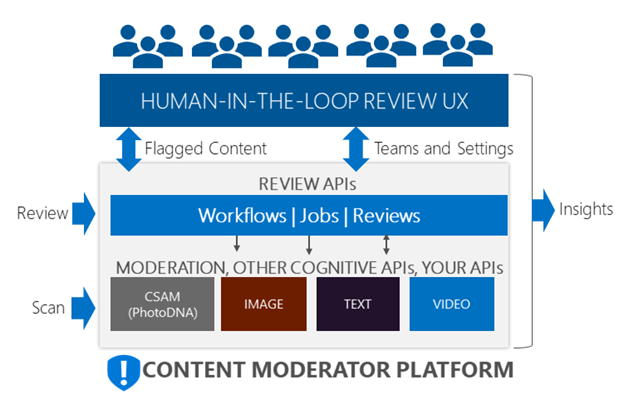
Its applications include: monitoring content and images bordered on offensive behavior, filter profanity and abusive language in text, check and control racy content in videos.
This is a Microsoft Cognitive Service to build custom image classifiers. Custom Vision makes it easier and faster to build, deploy and improve image classifiers. The Custom Vision Service provides a REST API and web interface that helps you upload the images and train the classifier. The most basic application of this cognitive service is customizable image recognition.
Through Speech Cognitive Services API, you can integrate speech processing capabilities into any app or service.
Irrespective of the source of audio, it is possible to convert the audio into text in real time streaming. It is possible to train the app on various language models and this can be customized for unique vocabularies and accents.
Here are the various applications of this service are: speech recognition, speech transcription, to build voice-triggered smart apps and customization of speech models on the basis of unique vocabularies or accents.
This helps you to build apps that would speak to users in the natural language. The content in the text format will be converted in real time making accessibility and usability highly advanced. The API lets you save this audio version, so you can listen to it at another time.
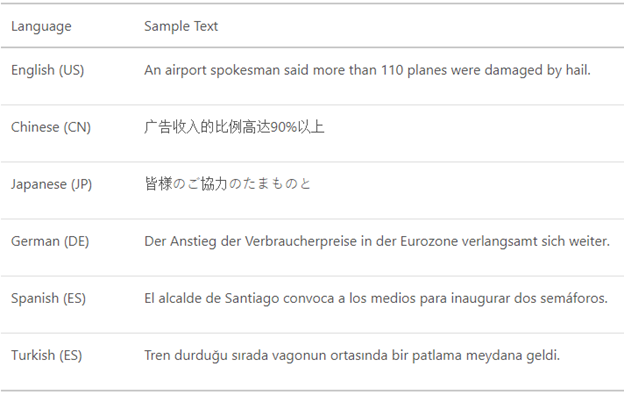
You can incorporate multiple languages, with the option of selecting through 75 voices in over 45 languages. The developer can select male and female voices, and choose the parameters of the speaking style including speed, pronunciation, tone and intonation.
Developers can power applications with an intelligent verification tool to ensure it is the concerned person that is working on the app. It can identify the user by checking how the speaker speaks a certain words, and then saving it for verification in the future. Applications of the API are voice recognition and reinforcing security settings.
The Speech Translator API is cloud based and an automatic service that lets developers add different kinds of translations to their application. The machine lets you translate more than 10 languages, including real time conversations.
Major applications include: transcribing and translating conversations to make sure the user understands and also integrating the same with the app so it reaches a global clientele.
Through the Cognitive Services Language API, you can develop apps that can understand all kinds of text, even the unstructured ones and decipher the meaning behind the speaker’s utterances. You can incorporate the following capabilities within the app.
In the Text Analytics API, the information from the text is extracted in the preview state to understand the speaker’s language and utterances. This would help analyze the user’s sentiments and intonations better.
The applications include: language detection, sentiment analysis, key phrase extraction and identifying entities in your text.
Bing Spell Check API lets you leverage machine learning and machine translation capabilities for contextual spell checking and grammar checking. It corrects the spelling for web searches, documents, etc. and recognizes slangs, common errors, homonyms and so on.
Applications include: correction of spelling errors, recognize slang, identify brand names, understand homophones and fixing word breaks.
The usability feature of every application will increase several times fold when they are able to understand the natural language of the user. The Language Understanding API makes it easier for the app to predict the overall meaning of the words, understand and spot the correct homonyms and other words that are easy to err. It also takes into account relevant information.
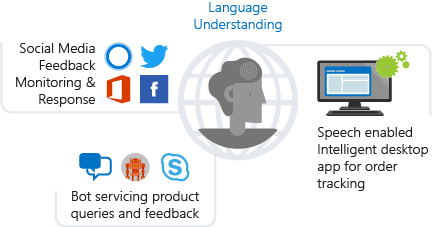
The main applications are: building chatbots, social media apps and speech-enabled desktop apps.
This Cognitive service uses Microsoft Translator API for translating text in real time. This is a great solution where multi-language support is needed. This would help with your application’s reach as well because the support is for more than 60 languages. Language detection can also be done automatically through text string. Applications include website localization and customer support.
The Knowledge API can leverage or create knowledge resources to be integrated into apps and services with several other capabilities.
QnA service makes easier for the user by going through the vast amounts of content and text and extracting the relevant ones from it. A knowledge base is created for this purpose.
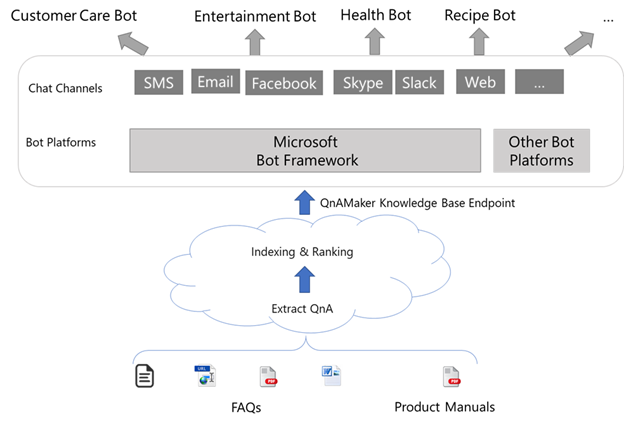
Applications of this API are creation of knowledge bases and chatbots.
Search helps the user find what he needs while searching through billions of web pages, videos, news search and images. Let’s take a look at some of its relevant APIs.
Indexed content can be easily retrieved through web search, and those can be filtered by type of search, freshness and more. Bing Web Search API can be used for safe search and location based search.
Visual search is done on the basis of image identification and classification. The images are studied, with the knowledge filed away. This makes it easier for similar images to be identified.
This API can be used to recognize monuments, art, celebrities, etc. and identify barcodes.
Customized search engines can identify what the users need and deliver the results relevant to them. It is powerful, dynamic and a global scale search index that can easily fit different needs. The APIs primary application is creating a custom search engine.
Through the Entity Search API, it is possible to infuse knowledge search into existing content. It will come up with the most relevant entity based on what the user searched for. It will scour through multiple entities like famous people, movies, books, and even businesses. It works by recognizing named entities and classifying them.
The Bing Video Search API comes back with a list of relevant videos from search queries and provides metadata like encoding format, publisher and creator info, view count, etc. This helps you find relevant video from the web. The video search API uses API keys for authentication and JSON format for data exchange. Its applications include identifying video trends and displaying relevant previews.
In Bing News Search API, you can search the news and other relevant videos from search queries and filter them on the basis of searchable metadata, local news and so on. This works almost similarly to Bing.com/News site. The results will be displayed on the basis of freshness too, as per the date of publication, URL, etc. A primary application area is the portrayal of trending news.
Bing Image Search API comes up with relevant images after searching through websites, full image URLs, thumbnails, etc. The results will be filtered on the basis of freshness, layout, image type, license and more. It can be used to create an images-only search engine.
Bing Autosuggest API delivers an intelligent autocompletion service that sends partial requests to the search engine, Bing. This makes it easier for the user to search and find what he needs.
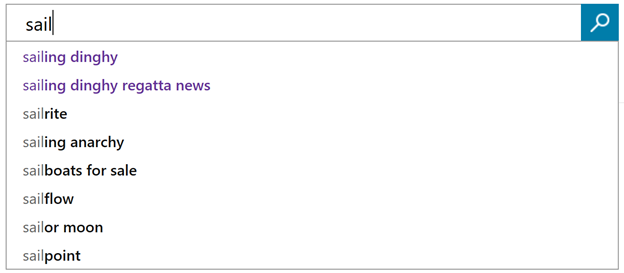
As the search engine prompts the user, he becomes clear on what he needs information on, and gets the required results with less number of keystrokes.
Developers can get a look and feel of the market trends through Azure Cognitive Services Labs. Early adopters of the trends can discover and try these technologies even though they are not yet categorized as Azure services. However, they do let you build intelligent algorithms into apps, bots and websites so you can hear, see and understand what the users need. This makes the apps engaging, intelligent, responsive and discoverable.
With Microsoft Cognitive Services, you can build powerful algorithms with minimal lines of code. There are different APIs that help you process images through computer vision, speech, knowledge extraction, web search and natural language processing. These give you access to highly updated technologies to incorporate AI based tasks into platforms, apps and services.
Once you start using the Cognitive Services, you can let the intelligent bots see the world as people generally see it. Here’s how you can start using Cognitive Services.
Open Azure account - You can sign in to the Azure portal and create a resource to start with the process.
Select required APIs from Cognitive Services page - Under the Azure Marketplace, you can select AI + Cognitive Services. This would give you a list of available APIs.
Get the API key - Click on the “See all” option to get a list of Cognitive Services APIs. Choose the API you need to start.
Start using the API – Choose the API type that you need to start using.
Demos and tutorials are available. So, if you are not sure of the API to use, you can go through the demos and tutorials to get a feel of how to use the APIs for your application.
When trial ends, pay for subscription. The payment will be based on a tier basis. The cost will be based on the usage and the options you want with the API. You will have to go through the pricing pages to know how much each API costs.
Finally, you can pin the account to the Azure portal dashboard by clicking the “Pin to Dashboard” option.
Some of the companies that use Microsoft Cognitive Services are Uber, GrayMeta, Cloudinary and Blucup.
Uber, the app that matches riders and drivers is world-famous for using the FaceAPI, a part of Microsoft Cognitive Services to protect both the driver and the passenger against fraudulent activities. There is a high speed, extra verification file that works on all smartphones and verifies the drivers irrespective of the lighting conditions.
The company’s aim was to enhance user experience in a wide range of conditions. The rider gets a picture of the driver as soon as they order a ride, and this leave a digital paper trail.
This makes sure passengers feel safe because the drivers are screened and approved.
Azure Cognitive Services has different pricing options for using the APIs. For example, for Computer Vision API, you get the first 5000 transactions for free, followed by $1 for up to 10 transactions per second and so on. You can visit the pricing page to get more details on this.
There is no upfront cost for using the services because you pay for only what you use. There is a free trial that would help you get a feel of the services. The pricing would be dependent on the selected APIs.
These Cognitive Services are super-intelligent APIs that would let you release intelligent applications to your customers. Through this you can create systems that can see, hear, speak and understand people in their own natural language and use the same communication method to relate to them.
Using AI to implement facial recognition and other functionalities with a few lines of code makes personalization and customization simpler. This will continue to mature, with computers thinking like the human brain, and machines becoming more than ready to be a part of daily life. Incorporating Cognitive Services in your apps will make them more relevant to the end user and therefore more prominent in the industry.
Interested in incorporating Azure Cognitive Services for your next app? Let us assist you!
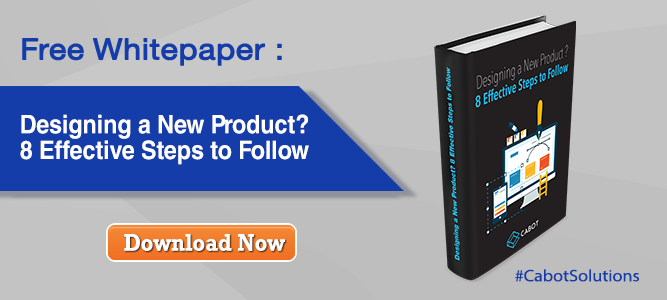

YOU WILL BE HEARING FROM US SOON!
We look forward to hearing from you!

YOU WILL BE HEARING FROM US SOON!